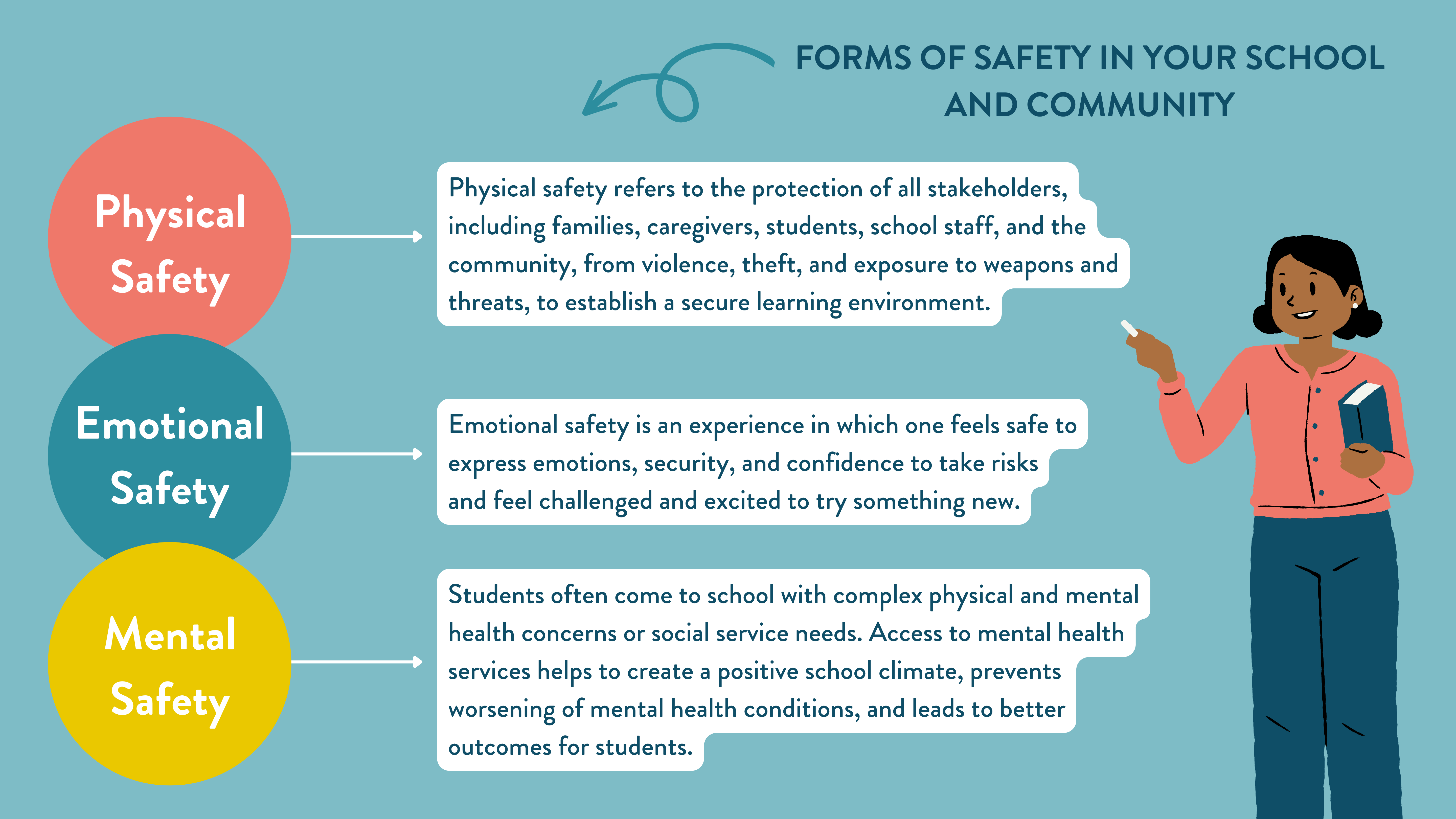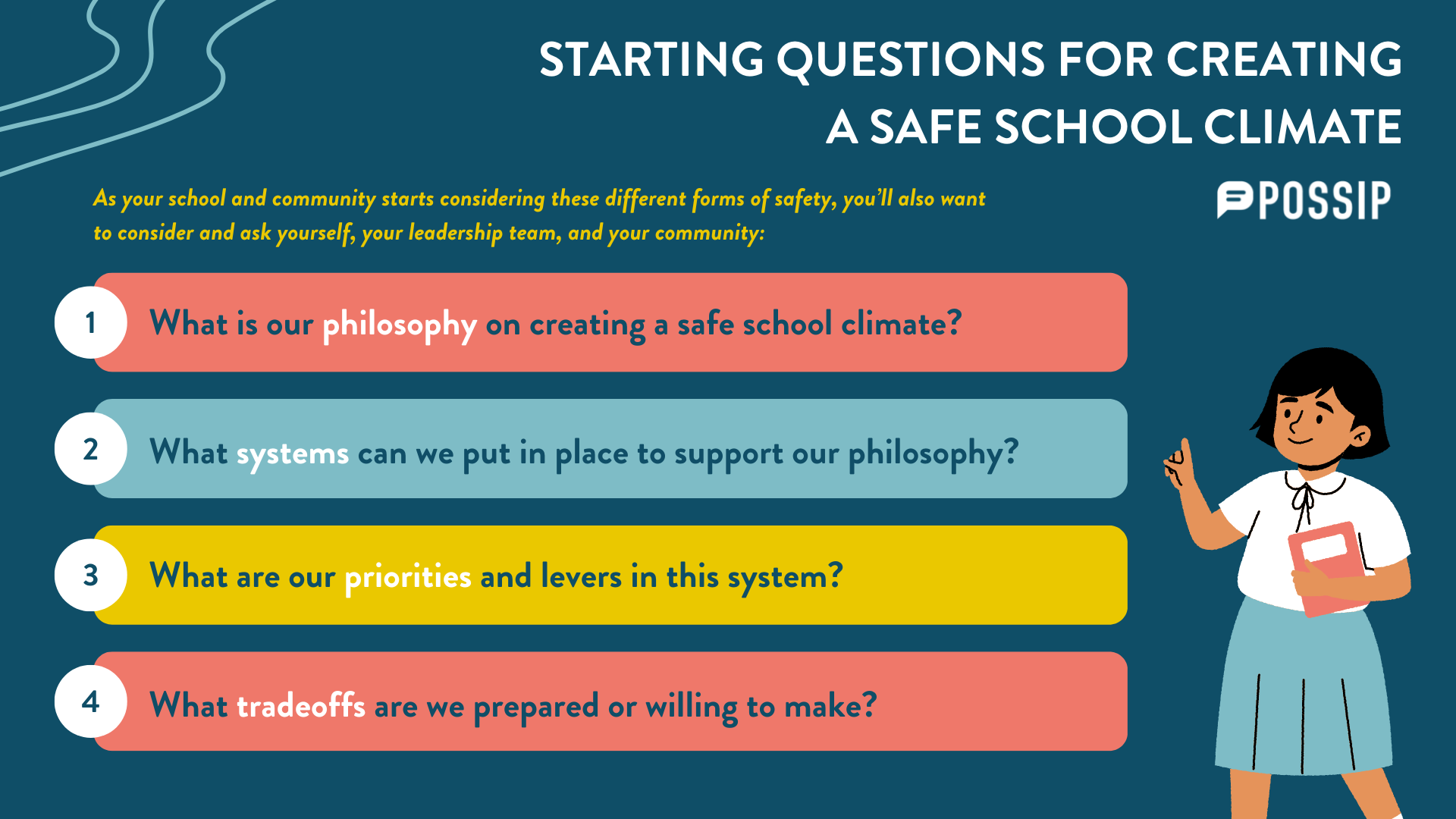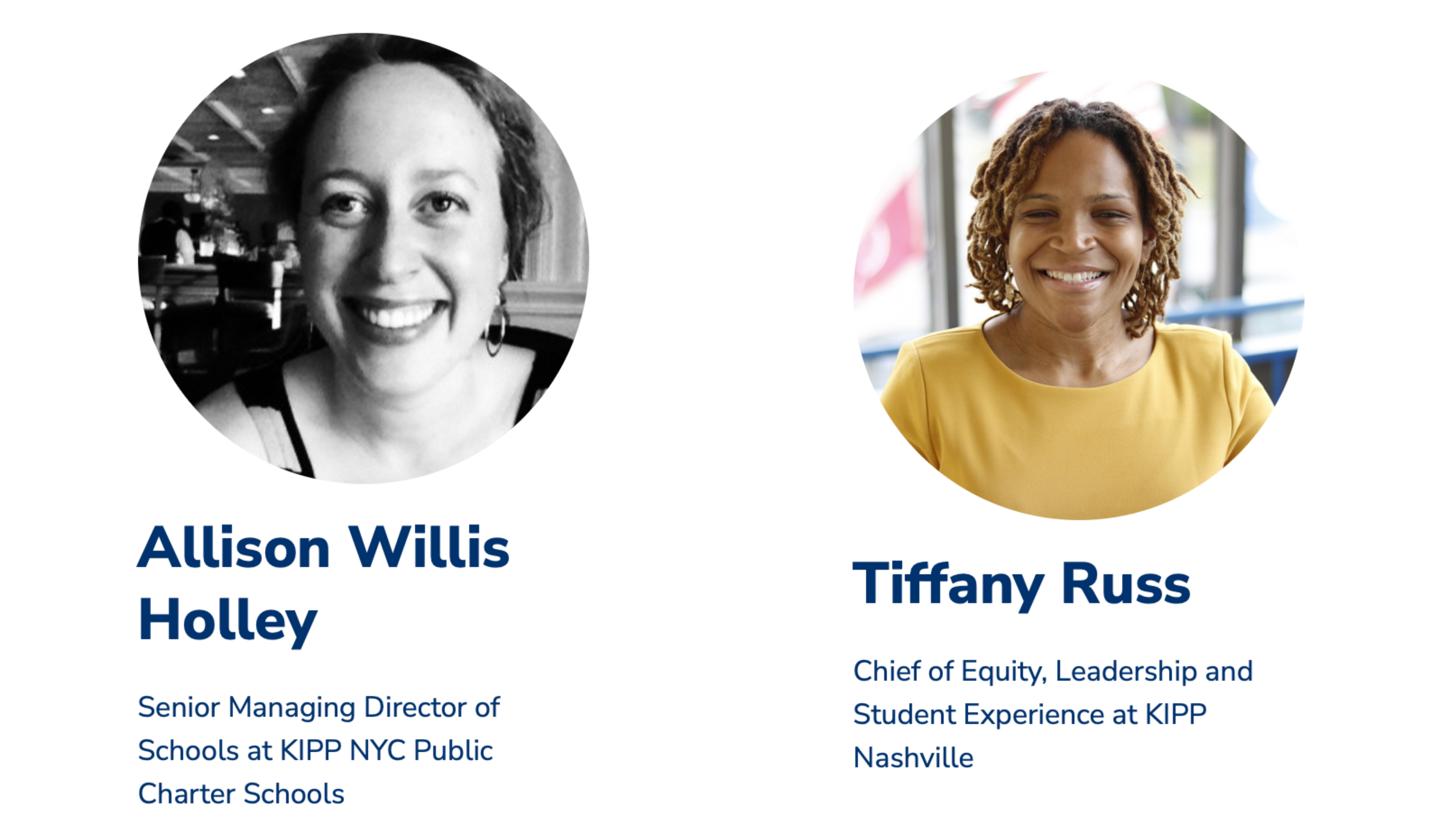While answers aren’t always easy, Possip CEO & Founder Shani Dowell shares important questions for you to ask and consider on a path to safer schools.
When you don’t have answers – sometimes the best you can offer is questions. School and nationwide safety and violence begs for answers – but we need to start with some questions.
As a human, it’s hard to take the frequency, randomness, and prevalence of violence in our country and world. Similar to how we are learning to live with COVID, it appears we’re getting accustomed to living with threats of violence. We operate without the armor or delusion of safety. Even places that were once considered safe havens for community – colleges, schools, churches, clubs – aren’t off limits.
And as much attention as gun violence and killings get, the truth is that far smaller incidents happen routinely. These are the small incidents that rip apart at the seams of our safety and community. This happens when adults fight at sporting events, when an adult yells at another adult in a school, and even when a kid throws a desk in a classroom. As we empathize with all the challenges and difficulties that lead kids and adults alike to behave in these ways, the truth is they also can create feelings of stress and vulnerability.
We don’t talk much about school safety because it’s hard to discuss. The truth is the big events that can be universally agreed upon as wrong cover up the realities of far more complex situations that happen in our schools and communities every day.
For schools and districts and parents to truly deal with school safety, we have to get honest. And the honest truth is, none of us have answers. Our ideals battle the realities of human behavior battle policies. We have to at least start asking ourselves the questions. Part of why we don’t have answers is because even asking the complex questions – of ourselves, of our society, of our schools, of our parents – is hard.
We’re going to be digging into this topic of School Safety at an event in December. Before we dig into questions let’s consider a few broad frameworks to consider.
Forms of Safety in Your School and Community
There are 3 forms of safety to consider:
Starting Questions For Creating a Safe School Climate
As your school and community starts considering these different forms of safety, you’ll also want to consider and ask yourself, your leadership team, and your community:
- What is our philosophy on creating a safe school climate?
- What systems can we put in place to support our philosophy?
- What are our priorities and levers in this system?
- What tradeoffs are we prepared or willing to make?
Additional Questions to Ask
We know some of these questions may be ones you can’t answer now. Our goal is to be able to at least consider the questions – even if the answers don’t come easily.
Questions for Schools and Systems Leaders:
- Do kids feel safe at school? How do you know?
- How can kids articulate if they feel safe or not?
- What are class sizes? How do class sizes affect feelings of physical, emotional, or mental safety?
- What happens to kids who demonstrate violence? Who name call? Who use vulgar language?
- How are kids supported when they show mental health challenges?
- How does a school appropriately address threats to safety?
- What parts of school campuses are physically safe? What parts of the building may be unsafe?
- How can you prepare and plan for safety breaches, while not creating fear in students?
- How do you communicate to your community – students, staff, parents, neighbors – about plans regarding safety?
- What is considered “on campus” versus “off campus threats? How do interventions change?
- What is an appropriate role, if any, for law enforcement to play when connected to school safety or student safety?
- How can we care for those who may be struggling and therefore a threat to safety? How can we do this while also caring for those who may be threatened by a student?
Questions for Parents and Caregivers:
- Does your child feel safe at school? Mentally? Emotionally? Physically?
- Has your child been name called? Hit?
- What could your child do that might make you say – my child is not safe in this environment?
- What could your child do that might make you say – my child is not safe for others?
- How can you share safety concerns with your child’s school?
- As a parent, what are your boundaries and lanes for what is okay for your child to experience at school?
- Are you comfortable with your child participating in safety drills? What type?
- What type of information and communication do you want from your child’s school?
When it comes to school safety – and society safety – sometimes the best we can offer is questions. For other resources related to school safety check out:
The post The Path to Safer Schools: Top Questions to Ask appeared first on Possip | Engagement Platform | School Feedback Survey.



 Workload continues to be a growing concern-
Workload continues to be a growing concern-  .
.